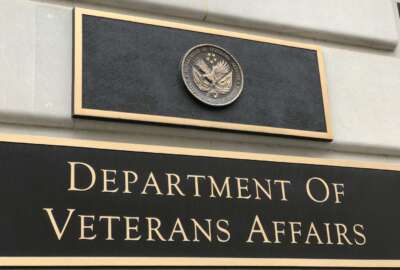GSA SLAMs its IT modernization project
Agency tries a new approach to solve problems by bringing together all stakeholders. GSA Administrator Martha Johnson says five parts of the program will be don...
By Jason Miller
Executive Editor
Federal News Radio
PHILADELPHIA — General Services Administration’s Administrator Martha Johnson didn’t want to wait eight months for the initial benefits of the agency’s information technology infrastructure modernization program.
So instead of just mandating the agency move more quickly, Johnson worked with Casey Coleman, GSA’s chief information officer, on a new approach to change the way the agency meets its goals.
And through a new process, called a SLAM, GSA now will complete five major parts of its IT modernization program by July 4.
“A SLAM is a highly participative, fast getting together of a community of people to solve a problem,” Johnson says at the 30th Annual Management of Change Conference sponsored by IAC/ACT. “The idea was we need to slam a lot of people together to get it done. It was modeled after something we did at GSA in the 1990s when I was there. We had a huge problem with leasing and we took all our leasing specialists across the Public Building Service, and we took the inspector general, the chief financial officer, the human resources head and the general counsel and we locked them in a room for three days and told them to fix it.”
Johnson says this time GSA brought together about 70 people, including labor relations, HR, procurement and lawyers, to an off-site location one day and by 3 p.m. had figured out how to complete major parts of its IT modernization.
So by July 4, GSA will implement Microsoft Office 2007 across the agency, voice over IP phones, secure access to the network using Homeland Security Presidential Directive 12 cards, and enhanced remote access and network capabilities.
“We had rules of engagement that said things like ‘have fun, take off your tie, get to work,'” she says. “This is not rocket science. It’s getting everyone in the room, closing the door and getting it done. We made agreements about what would be happening. And from what I can tell, we are on course.”
Johnson says this first SLAM is a prototype for the way she wants GSA and others in government to improve how they collaborate.
“SLAM gives us a starting model,” she says. “I would like to have online SLAMs, fast ones, big ones and small ones. I want us to be aggressive so we move through problems and get results.”
Johnson also says the government is just in its infancy of real collaboration. Too often, she says, collaboration meant conversation or participation, but not true partnership across the agency.
Johnson says the first SLAM provides some valuable lessons learned.
“You need to have leadership alignment,” she says. “You need the leaders to be connected and be in agreement. This is not hard, just get it done. You can’t go forward if they are not.”
Then agencies need a goal to achieve, and Johnson recommends putting the deadline for the goal around a holiday, such as July 4, and having fun with it.
“One of the things the government needs to do is be much more disciplined about choosing their priorities and taking them on,” she says. “We talk about it as the ‘A’ work, don’t do the B, C, D or E work, do the A work. It powers you up, gives you focus and takes the important thing and moves them along.”
She also says the ability to move quickly and make a difference, and bring as many stakeholders or key players together at once to participate in the problem solving.
Johnson also says agencies need a few key ingredients to make a SLAM work, such as technology, editors, crowds and experts.
“The technology needs to be designed to allow for editors, people who can come on and say ‘excuse me, we’ve heard that suggestion five times, thank you,’ wisdom of crowds so you are reaching vastly and broadly and have experts so you have people who can bring real expertise to the table,” she says.
(Copyright 2010 by FederalNewsRadio.com. All Rights Reserved.)
Copyright © 2024 Federal News Network. All rights reserved. This website is not intended for users located within the European Economic Area.





